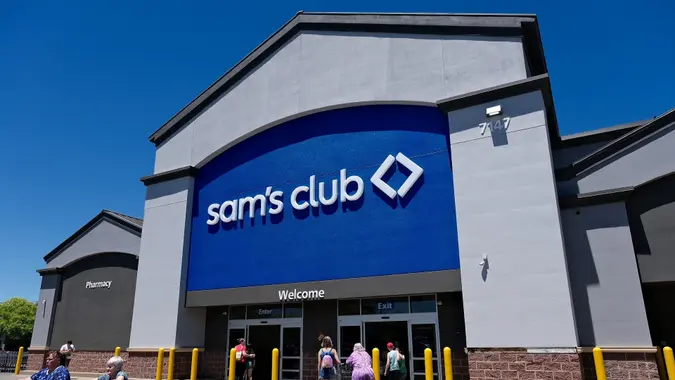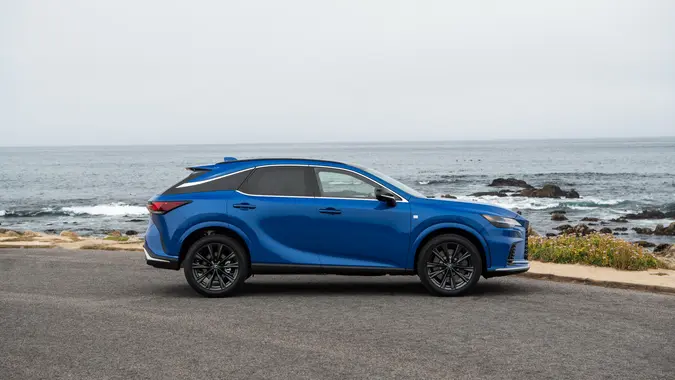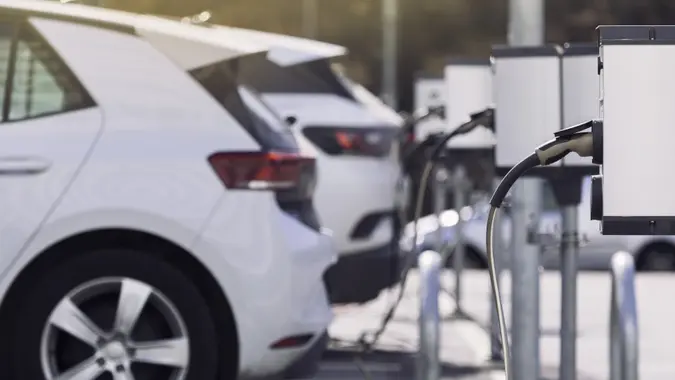Tipping Etiquette: If You’re Broke, What’s the Right Amount To Give?

Commitment to Our Readers
GOBankingRates' editorial team is committed to bringing you unbiased reviews and information. We use data-driven methodologies to evaluate financial products and services - our reviews and ratings are not influenced by advertisers. You can read more about our editorial guidelines and our products and services review methodology.

20 Years
Helping You Live Richer

Reviewed
by Experts

Trusted by
Millions of Readers
Everything seems to cost more these days, so it’s bad enough that the average cost for a cup of coffee is around $6 at a local cafe. You’ll also be asked to add a tip before you swipe your card — just tap a button to add anywhere from $1 to 20% to the tab. That simple question has everyone buzzing about tipping culture in the United States and where to draw the line.
To tip or not to tip is a serious concern when you’re struggling to make ends meet. If you’re broke, you may not have cash to spare on more than the bill. Of course, one approach is to include the tip when you budget for a night out or a trip to the salon — even if it means you have to wait a few more days or weeks until you’ve saved enough to cover the entire bill. But what do you do when you can’t avoid a situation where you’re expected to tip? Here’s what you need to know.
How Much Should You Tip?
Americans usually tip between 11% and 20% for services, and the average tip is around 16%. These tips typically go to restaurant servers, food delivery drivers, salon personnel and bartenders. These amounts generally match the tipping suggestions from the Emily Post Institute:
- Curbside food delivery: 10%
- Bartender: $1 to $2 per drink
- Home food delivery: 10%-15%
- Salon staff: 15%-20% of the cost of the service
- Skycaps and bellhops: $2 for one bag and $1 for each additional bag
- Take out: $0 (unless you placed a large order or one with multiple menu substitutions)
- Taxi or car-sharing drivers: 15%-20% of the fare; tip them the same as a skycap for helping with bags
- Wait staff: 10%-20%
- Valet: $2-$5
Can You Skip the Tip?
When the person providing the service is paid at least minimum wage, you may feel more comfortable skipping the tip. Of course, rounding up the bill to the nearest dollar or leaving $1 or $2 also shows your appreciation for their work without breaking the bank. This includes the people who handle your luggage, clean your hotel room and prepare your coffee.
You do not need to tip hosts or cashiers who hand you the takeout you personally pick up. However, some workers receive a base pay lower than minimum wage and rely on tips to make up the difference.
Wait Staff
Seven states (Alaska, California, Minnesota, Montana, Nevada, Oregon and Washington) require restaurant owners to pay their wait staff a minimum cash wage, which ranges from $4 to $16.28. Servers and food runners in other states often earn less than the local minimum wage because their employers can deduct a tip credit from their hourly rate. If you skip the tip, the worker may end up losing money. At the very least, try to leave 10% in those situations.
Hairdresser
Hairdressers work under a number of compensation structures. Some receive a percentage of the money they bring into the salon — typically between 40% to 50%. Others may earn a set wage or rent space from the salon owner. You may not know which type of compensation structure they have — and you may not feel comfortable asking — so consider leaving at least 10% to show your appreciation for their work.
Food Delivery Services
Unless they’re employed by the restaurant, food delivery workers receive a base pay — usually around $2 to $10 per order. At the lower end of that range, the driver needs to make several deliveries per hour to earn minimum wage. They’re also using their personal vehicles and must pay for maintenance and repairs to keep it running optimally. At the very least, tip 10%.
What Happens If You Can’t Leave a Tip?
Tipping is not required by law, so there are no legal consequences for failing to pay the extra cash. However, you may notice a difference in the quality of the service you receive — especially if you’re a regular at the establishment. You also may develop a reputation among food delivery drivers if you routinely skip the tip. A few drivers we spoke with shared they check names and addresses when a request comes in, and they are more likely to decline your delivery request if you’ve not tipped on previous orders.
If you can’t tip the customary percentages, give what you can — and give them cash. The tip you pay with a credit card may be held until the worker’s next paycheck. When you give them cash, they have the money immediately. It’s a nice compromise when your tip is less than what they’re used to receiving. And no matter if you tip or don’t tip, smile, thank them for their services, and consider leaving a positive review on social media to help them drum up new business.
 Written by
Written by  Edited by
Edited by 

























